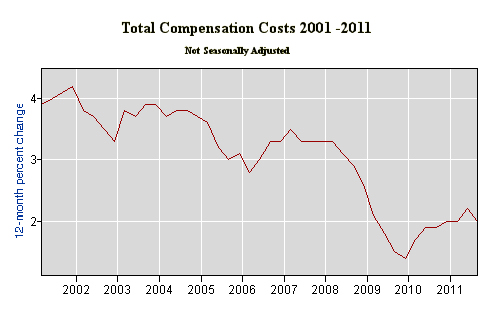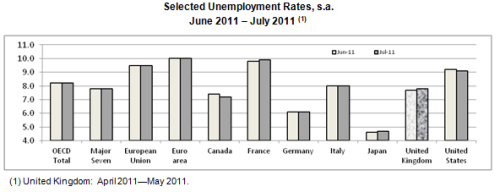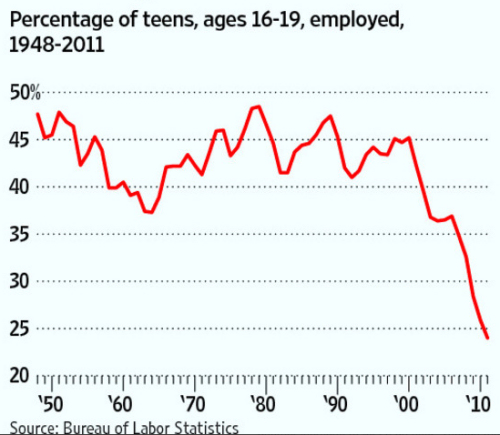The U.S. Bureau of Labor Statistics (BLS) released the results of their 4th quarter 2011 wage and salary survey today. Data on usual weekly earnings are collected as part of the Current Population Survey, a nationwide sample survey of households in which respondents are asked, among other things, how much each wage and salary worker usually earns. The BLS surveyed a representative sample of the 101.5 million full-time wage and salary workers and determined that the mean (not seasonally adjusted) earnings were $764 per week. Annualized that would be $39,728.
Wages varied by race, gender, age group and profession. As would be expected, persons employed full time in management, professional, and related occupations had the highest median weekly earnings with men earning $1,274 and women earning $946. Men and women employed in service jobs earned the least, $578 and $440, respectively.
Education also played a part in the median wages. Full-time workers age 25 and over without a high school diploma had median weekly earnings of $444, compared with $641 for high school graduates (no college) and $1,158 for those holding at least a bachelor’s degree.
Wages also varied by age with the highest wages going to those in the oldest age group. Among men, those age 55 to 64 had the highest median weekly earnings at $1,029. While those slightly younger ,45 to 54 had the second highest at $993.
Earnings by race are also tracked, with Asians having the highest median wages at $880, Whites at $786, Blacks at $621, and Hispanics at $534. These numbers do not take into consideration education, language abilities or occupation. Women had median weekly earnings of $688, or 81.6 percent of the $843 median for men. White women earned 81.4 percent as much as their male counterparts, black women earned 91.1 percent as much as their male counterparts, Asian women earned 80.3 percent as much as their male counterparts and Hispanic women women earned 90.4 percent as much as their male counterparts. Interestingly if you take 80.3% of the Asian male wage you get $706 for Asian women which is more than the $621 for Black men.
The BLS uses the “Mean” rather than the average. A “Mean” determines the amount the middle person in a group makes. So if you have five people earning $10,000, $20,000, $30,000, $40,000 and $50,000 the mean would be $30,000. In this example the average would also be $30,000. But the reason the BLS uses the mean is because it eliminates the effects of high income wage earners. For instance if you have five different wage earners earning $10,000, $20,000, $30,000, $40,000 and then you have Mitt Romney earning $21 Million. The mean is still $30,000 but the average is $4,220,000.





